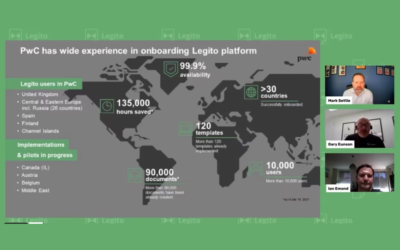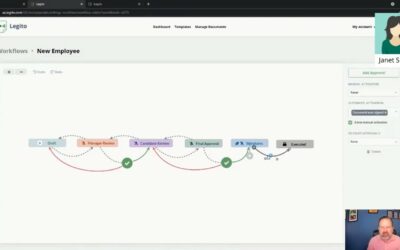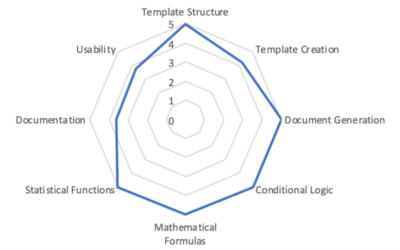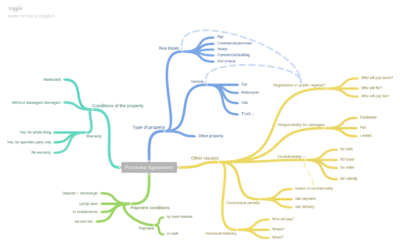LIBOR Transitions: 2021 and Beyond
LIBOR Transitions: 2021 and Beyond
LIBOR, the world’s most important number, will be discontinued at the end of 2021. Published each day by the Intercontinental Exchange (ICE) in five (5) currencies (US Dollars, Sterling, Euros, Japanese Yen, and Swiss Francs), LIBOR is referenced in tens of millions of contracts, combining for a value exceeding USD 240 trillion, ranging all manner of financial activity. Just about any financial institution that leverages global financial systems for transactions uses LIBOR.
WHEN WILL PUBLICATIONS CEASE?
ICE Benchmark Administration will cease the LIBOR publications as follows:
- December 31, 2021 – GBP, EUR, CHF and JPY LIBOR; and the one(1) week and two (2) month USD LIBOR; and
- June 30, 2023 – the overnight and one (1) month, three (3) month, six (6) month, and twelve (12) month USD LIBOR
WHAT WILL REPLACE LIBOR?
LIBOR is set to be replaced by Alternative Reference Rates (ARRs) beginning from January 1, 2021, although the Secured Overnight Financing Rate (SOFR) is not poised to completely replace LIBOR until 2023. SOFR is likely to be used in the United States and the United Kingdom, and elsewhere. Other countries are exploring using their own version of a benchmark rate for when LIBOR is finally phased out.
Alternative Reference Rates:
- Secured Overnight Financing Rate (SOFR) (Fed Reserve Bank of New York – USD)
- Reformed Sterling Overnight Index Average (SONIA) (Bank of England – GDP)
- Euro Short-Term Rate (ESTR) (European Central Bank – EUR)
- Swiss Average Rate Overnight (SARON) (SIX Swiss Exchange – CHF)
- Tokyo Overnight Average Rate (TONAR) (Bank of Japan – JPY)
The Alternative Reference Rates Committee (ARRC) is a group of private-market participants convened by the Federal Reserve Board and the New York Fed to help ensure a successful transition from U.S. dollar (USD) LIBOR to a more robust reference rate, its recommended alternative, the Secured Overnight Financing Rate (SOFR).
How does LIBOR differ from these ARR’s?
LIBOR is currently published as a forward-looking rate (i.e., one month, three months, etc.), while SOFR is not. LIBOR is meant to represent a bank’s cost of capital, while SOFR measures rates applicable to short-term, secured financing.
Download our LIBOR Whitepaper
Please enter your name and email information. After clicking the button, you will receive an email with a whitepaper
REMEDIATION: WHAT ARE THE CONTRACTUAL SOLUTIONS?
As mentioned above, the discontinuation of LIBOR affects millions of contracts. These contracts will need to be amended to reflect new rates. The sheer volume and complexity of the changes required leads to one essential question: “How should we manage the LIBOR transition in our contracts?”
The most obvious contractual solution is to avoid referencing LIBOR in new contracts, even for LIBOR rates that will continue to be published after December 31, 2021. But, should it prove necessary, then best practice “fallback language” should be added to the contract, which would allow for the referencing of an alternative reference rate.
What is Fallback language? Fallback language refers to the contractual provisions that define a process to use an alternative reference rate should the benchmark rate (e.g., USD LIBOR) not be available. Fallback language generally has three key components: i) a fallback trigger event, ii) a benchmark replacement (ARR), and iii) a benchmark replacement adjustment. However, this is not a cure-all, as other factors must be considered and evaluated to ensure equity, including the maturity date, contract governing law and jurisdiction, and force majeure provisions.
The ARRC is considering rules that will provide “hardwired” fallback language for contracts which refer to LIBOR as the reference rate, automatically converting that reference to SOFR. However, this also is not a magic bullet, and should only be relied upon as a last resort for those contracts which may have been missed during review.
Even a new contract that references a rate other than LIBOR should be drafted with strong fallback language, because even the ARRs are not perfect, and could possibly face similar regulatory scrutiny as LIBOR. As with any major contract project, drafting should not only meet the current challenge, but also have a built-in flexibility to anticipate unknown situations – meaning contracts that allow for easy amending.
Next you will want to determine which options to use to apply the updates to the contracts, whether through:
- Repapering the contracts completely
- Amending existing contracts
- Relying on Hardwiring regulations
- Relying on existing Fallback Language
HOW DO YOU TRANSITION FROM LIBOR TODAY?
Any contracts referencing LIBOR rates after those rates have been discontinued will unnecessarily expose your organization to risk. No matter which LIBOR cessation date applies to your business, it makes sense to get started as soon as possible. As with any major endeavor on an enterprise level, it is important to plan.
- Build a transition team.
Assign a team the responsibility of overseeing transition activities. The size, make-up, and structure of the group will be contingent on your type of business, but at the very least you will want to include:-
- No fallback language
- A member of senior management to own the project.
- Legal & Compliance team members, who will be familiar with the regulations, and subject matter.
- Technology team members, who will be able to ensure that the agreed solutions are possible to implement.
- Other stakeholders, dependent on the nature of your organization.
-
- Define a clear transition strategy.
Develop a strategy document that comprehensively describes your planned transition activities, including tactics to minimize your organization’s risks, costs and delays.
- Gather all related contracts to a single location.
- Assess your document management resources.
Already having in place a strong document management system, enhanced by automated Contract Lifecycle Management (CLM) technology will make your life easier. Whether or not you have LIBOR specific classifications, a robust document management tool will increase the efficiency of your transition.
If your organization does not yet have document management software, then now is the perfect opportunity to define your contract processes, and find a solution that will not only help with your LIBOR change management, but will also prepare you for any upcoming challenges in your business.
- Draft best practice fallback language that contemplates many different contract, regulatory, and product variables.
- Assess and Categorize your contracts.
Inventory all contracts that contain interest reference rates and perform an impact assessment. Evaluate the contracts and determine how any risk, if any, will be mitigated. This evaluation and risk mitigation will not only be a one time project, so being able to capture, and report on this information on a regular basis is necessary for maintaining compliance, and reducing exposure. Part of your document management assessment should include how detailed your document records will be.
Some things to look out for include:-
- Weak in fallback language
- No fallback language
- Levels of risk depending on the fallback language
-
- Apply Your Options (as referenced above).
The ARRC’s suggested transition strategy can be found here.
HOW DOES DOCUMENT AUTOMATION MAKE LIBOR TRANSITIONS EASIER?
As herculean a task this may seem, with the right legal technology, reducing your risk exposure can be done quickly, safely, and inexpensively. The key tools for success are:
- Automated Document Assembly
- Automated Workflows
- Automated Data Extraction
- Document Management and Organization including tools for Audit and Compliance
- OCR capabilities
Automation Document Assembly
- Preestablished Fallback Language, drafted and approved by your legal and product teams; this language is automatically drafted into contracts.
- Dynamically draft references to alternative ACCRs, or triggers with Fallback Language depending on value, currency, term length, type of transaction or instrument, or more.
- Automatically draft contract amendments based on legacy contract information.
- Import data from spreadsheets or existing documents to populate fields in new contracts (and dynamically draft new contracts based on that imported data).
- Batch Generate documents simultaneously with information from databases and spreadsheets.
Automated Data Extraction; Reporting and Analytics
- Data on reference rate type, key contract dates, document term length and expiration, contract value, fallback language type, parties, and more is automatically pulled from contracts providing troves of data for strong reporting and rich analytics.
Document Management & Organization
- Extracted data allows for easy classification of document risk.
- Newly automatically drafted documents are automatically categorized based on their type and content.
Automated Workflows & Approvals
- Automated Workflows will take contracts and, based on the type, expiration date, value, or risk classification, automatically send them to the correct stakeholders for review.
Optical Character Recognition (OCR) (with Artificial Intelligence / Machine Learning)
A strong OCR tool will read text, and help categorize risk according to fallback clauses, and the best tools utilize some type of machine learning for optimum results. Often however, these solutions do not provide comprehensive automated Document Management and Assembly tools. The top automated document management and assembly providers, however, develop partnerships with OCR experts to provide the best contract lifecycle management solution for managing a successful LIBOR transition.
References:
More Industry Insights


















